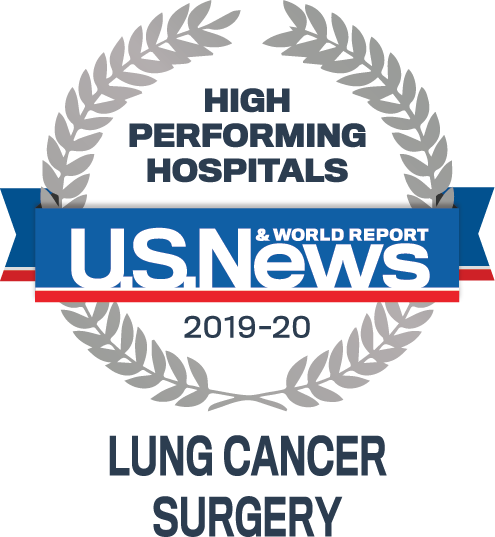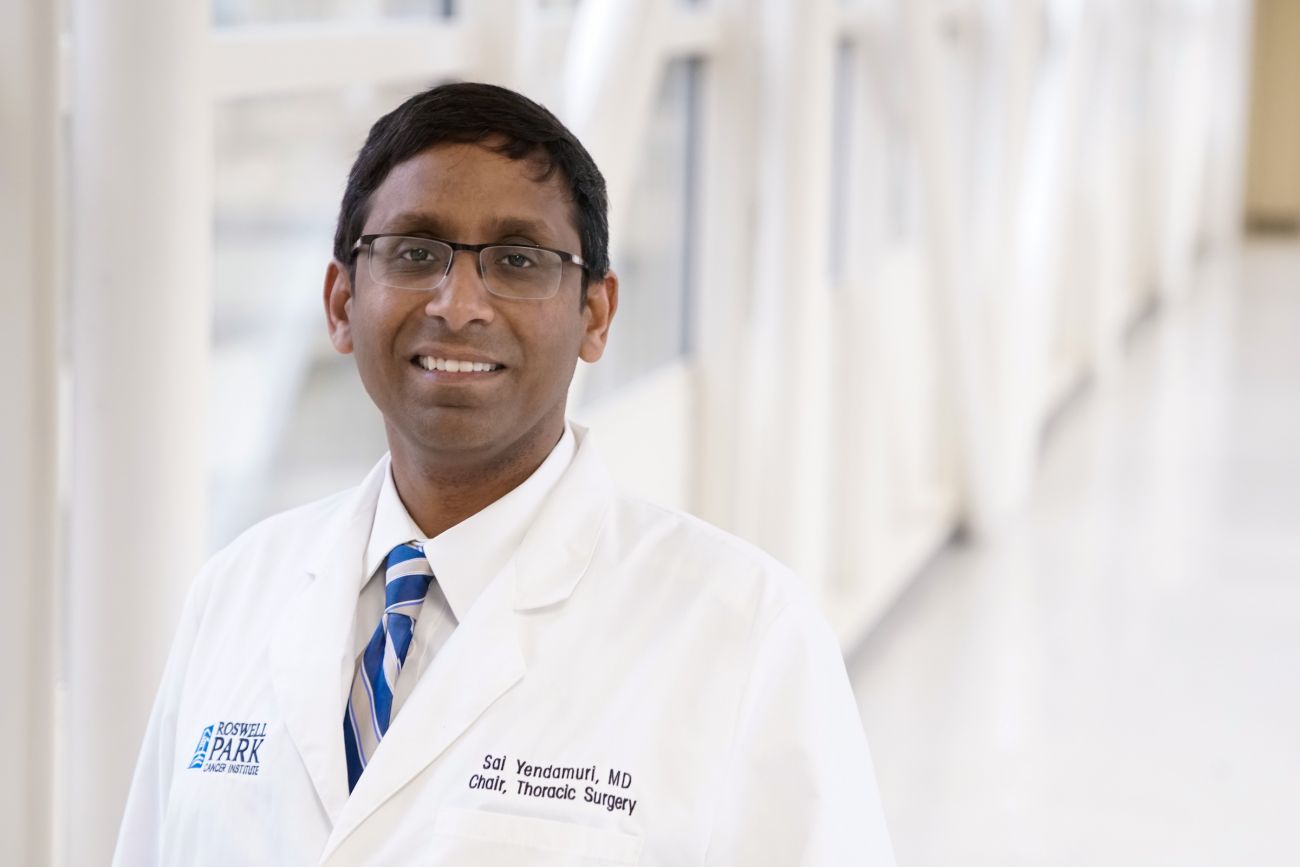VATS offers better option for mediastinal lymph node and lung biopsy
Getting tissue samples or biopsies from the lungs and nearby lymph nodes can be tricky business. In the past, the left side — where the heart lies — typically required a surgery called anterior mediastinotomy, or Chamberlain procedure, to closely examine hard-to-reach thoracic areas and biopsy the lymph nodes between the pulmonary artery and the aorta. Surgical advances, such as video-assisted thoracoscopic surgery (VATS), have replaced the Chamberlain procedure and offer the surgeon a better way to examine the lungs, determine the extent of the disease and get higher-quality biopsies.
“We use VATS almost exclusively for surgical assessment of the lungs and tumor, lymph node biopsies and surgical staging for this location,” says Sai Yendamuri, MD, FACS, Chair of Thoracic Surgery at Roswell Park. “The Chamberlain procedure is nearly antiquated.”

A Leader in Minimally Invasive Surgery
Learn more about our top-ranked lung surgery program.
Learn MoreVATS procedures are minimally invasive techniques in which the surgeon operates through two to four small incisions called ports, with the assistance of three-dimensional video guidance. Roswell Park helped to pioneer the VATS approach and remains a world leader in using the technique for pneumonectomy, or removal of a lung, using VATS for about 90% of surgeries, compared to national rates of 20 to 30%.
Never miss another Cancer Talk blog!
Sign up to receive our monthly Cancer Talk e-newsletter.
Sign up!With such high-volume expertise, it makes sense for Roswell Park’s thoracic surgeons to employ the approach for definitive diagnosis, biopsy and staging purposes, too. “It’s a superior procedure, especially for smaller, hard-to-see lesions on the left side of the chest and near the pulmonary artery,” says Dr. Yendamuri. “And with VATS, we can go anywhere in the chest. The increased visualization and ability to get adequate tissue for pathology helps us to make better treatment decisions going forward.”


